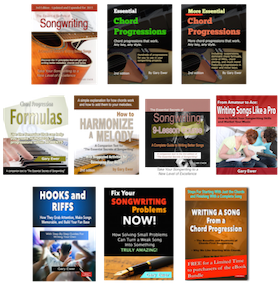For songs in a verse-only format, the verse has to act as a complete musical journey. It doesn’t have a chorus to rely on to provide extra musical excitement. In addition to the challenge of making a verse feel complete, verse-only songs run the risk of being overly repetitive.
To avoid excessive repetition, many verse-only songs will include a bridge as a way of providing some musical variety. I’ve written recently about Billy Joel’s “It’s Still Rock and Roll To Me” as an example of this. Many will also include a short refrain at the end of the verse; Dylan’s “Blowin’ In the Wind” is an example.
So adding a refrain has the benefit of strengthening the song’s structure and providing a sense of symmetry, while including a bridge adds variety. But there is another option for verse-only songs: extending the verse melody for Verse 2 and/or Verse 3.
A perfect example of this can be found in The Alan Parsons Project’s “Time“, from “The Turn of a Friendly Card” album (1981).
As you can hear, the first verse ends at the 1’14” mark, and then we hear Verse 2. But in Verse 2, the melody extends beyond where verse 1 ended. At 2’13”, Parsons adds what you might think of as a “coda”, and its main purpose is to provide a heightened sense of musical excitement and momentum that Verse 1 was not able to attain.
Not only does Verse 2 extend in length, but it provides a beautiful climactic high point not present in Verse 1. Once the climactic moment occurs (“…’til it’s gone forever”), the melody moves down to end on a low dominant note (5th note).
If you’ve been working on a song and can’t get a chorus to work properly, you might want to take a closer look at your verse and see if all you need is an extended verse melody for Verse 2 – a way of heightening musical excitement without worrying about the chorus. If you go this route, and want to do what Alan Parsons did, remember these points:
- Move the extended melody upward, higher than the verse notes you’ve used already.
- Provide a climactic moment, and then move your melody downward to end lower.
- Resist the temptation to allow your extended melody to go on for too long. Keep the extension to 4-8 bars in length.
- Provide a nice, tonally-satisfying close. By keeping it simple, you strengthen the notion that the extra music is simply an extended verse, which is what you want.
- Allow your melody extension to move to an opposite-mode chord. In other words, if your song is in a major key, try to find a way to include a minor chord. It enhances the notion that the melody is not simply embellishing the normal ending of the verse, but is in fact going on an extended musical journey. Alan Parsons does this by making Cm the first significant chord of the extension in “Time.”
Extending a verse melody will take some experimenting, and of course it’s going to require some extra lyrics. How you know it’s working for you is thought he energy boost that should occur. If extending your melody simply sounds like a long-winded delaying of the natural end, you’ve got to rework the climactic moment. Be sure that you’ve given the extra music an important shot of citcitement.
Written by Gary Ewer. Follow Gary on Twitter.
 Written by Gary Ewer. Follow Gary on Twitter
Written by Gary Ewer. Follow Gary on Twitter
 Do you simply need some chords to get you started? “Essential Chord Progressions“, and “More Essential Chord Progressions” are part of “The Essential Secrets of Songwriting” eBook Bundle packages. Hundreds of chords to use as is, or modify to better suit your songs. Get today’s Deluxe Bundle Deal: READ MORE.
Do you simply need some chords to get you started? “Essential Chord Progressions“, and “More Essential Chord Progressions” are part of “The Essential Secrets of Songwriting” eBook Bundle packages. Hundreds of chords to use as is, or modify to better suit your songs. Get today’s Deluxe Bundle Deal: READ MORE.











Lessons is helpfull- i see things clear each time after running through them….. Big thanks i stay tuned in!